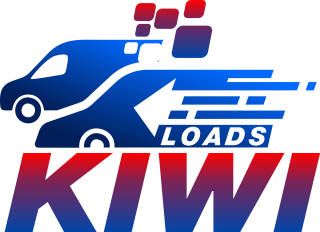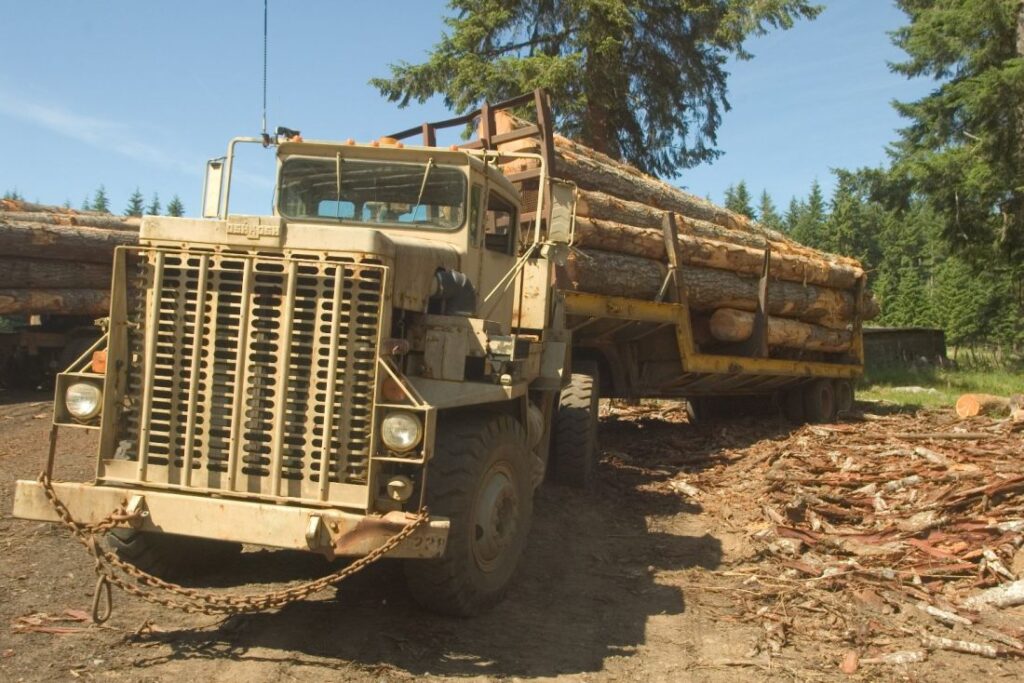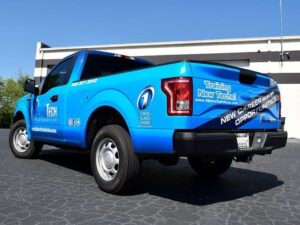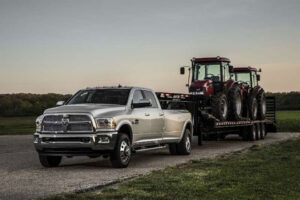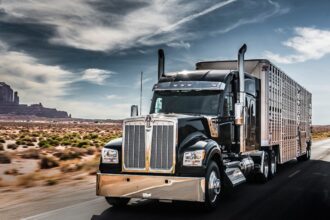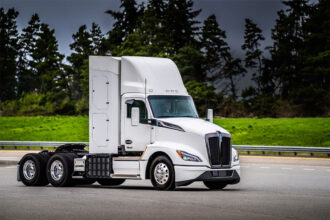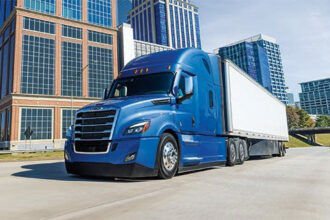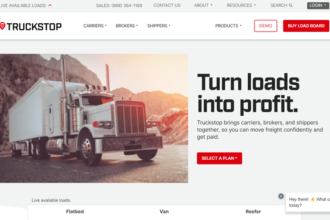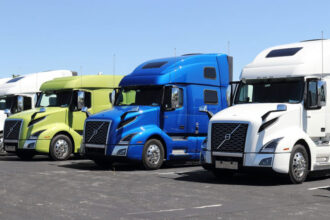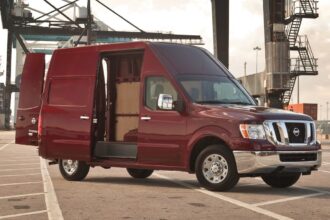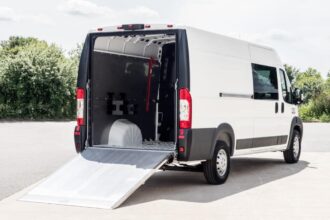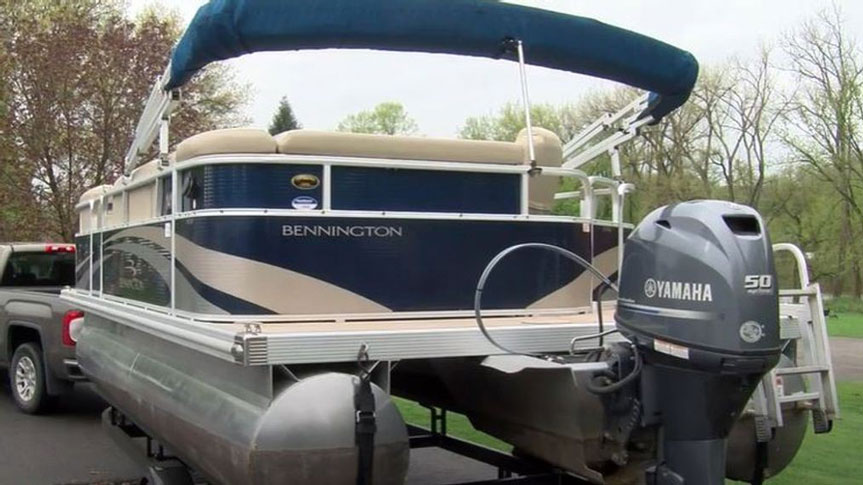Table of Contents
Starting a logging truck business can be a lucrative venture for those who are willing to put in the hard work and dedication required. However, before you can start hauling logs, you need to purchase the right logging truck that fits your business needs. With so many options out there, it can be overwhelming to know where to start.
In this guide, we’ll walk you through the process of buying a logging truck for your business and provide you with valuable insights on what to consider before making your purchase. From understanding the different types of logging trucks available to choosing the right size and capacity for your needs, read on to learn how to make the right investment for your logging truck business.
To Buy a Logging Truck for Business:
- Assess Your Business Needs
- Set a Budget
- Research Logging Trucks
- Choose a Dealer
- Inspect the Truck
- Take a Test Drive
- Negotiate the Price
- Finalize the Purchase
- Obtain Insurance Coverage and Register Your Truck
Ready to gain more insights? Let’s go!
1. Assess Your Business Needs
To purchase a logging truck for business, assess your business needs.
Before purchasing a logging truck for your business, it’s important to assess your needs to determine the type of truck that will best suit your operations. Here are some factors to consider:
- Size of the logs: Consider the size of the logs you will be transporting. The truck you choose should be able to accommodate the size and weight of your logs without compromising safety or efficiency.
- Distance of your hauls: Consider the distance of your hauls. If you are driving long distances, you may want to consider a truck with good fuel efficiency to reduce costs.
- Terrain: Consider the terrain you will be driving in. If you will be driving on rough or mountainous terrain, you may want to consider a truck with good traction and stability to ensure safe operation.
- Payload capacity: Consider the payload capacity of the truck. The truck you choose should be able to handle the weight of your logs without exceeding its maximum capacity.
- Driver comfort: Consider driver comfort when choosing a logging truck. Drivers spend long hours on the road, so it’s important to choose a truck that provides a comfortable and safe driving experience.
By taking these factors into account, you can determine the type of logging truck that best suits your business needs and ensure safe and efficient operation.
2. Set a Budget
To secure a logging truck for business, set a budget.
When setting a budget for purchasing a logging truck, it’s important to consider the cost of the truck itself, ongoing maintenance expenses, insurance premiums, and other related costs such as licensing fees, permits, taxes, and required safety equipment. Research the market to determine the average cost of logging trucks that meet your requirements and factor in the ongoing maintenance costs. Contact insurance providers to get quotes for insuring a logging truck and ensure you have adequate insurance coverage. By taking all these factors into account, you can determine a realistic budget for purchasing a logging truck that fits your business needs and financial situation.
3. Research Logging Trucks
To shop for a logging truck for business, research logging trucks.
When researching logging trucks, it’s important to consider factors such as engine power, fuel efficiency, durability, and safety features. Here are some types of logging trucks to consider:
- Straight trucks: These are the most common type of logging trucks. They have a single frame and a fixed trailer. Straight trucks come in various sizes and can be customized to meet specific business needs.
- Tractor-trailers: Tractor-trailers consist of a separate cab and trailer. They offer more cargo capacity and are suitable for long hauls. They tend to have better fuel efficiency and can be more comfortable for drivers.
- Self-loading trucks: These trucks have a hydraulic arm for lifting and loading logs onto the truck without additional equipment. They are efficient for quick loading and unloading.
- Off-road logging trucks: Designed for rough terrains, these trucks have larger tires, higher ground clearance, and more powerful engines. They are ideal for remote areas or unpaved roads.
Consider the specific needs of your business when researching logging trucks. Look for trucks that have the right payload capacity, fuel efficiency, engine power, and safety features to meet your requirements effectively.
4. Choose a Dealer
To acquire a logging truck for business, choose a dealer.
When choosing a dealer to purchase a logging truck from, it’s important to consider factors such as reputation, specialization, financing options, warranties, and after-sales support. Look for a reputable dealer that specializes in selling logging trucks and offers financing options to make the purchase more affordable. Choose a dealer that offers warranties on their trucks and after-sales support, such as maintenance and repairs, technical support, and driver training. By taking these factors into account, you can find a dealer that provides the support and services you need to ensure safe and efficient operation of your truck.
5. Inspect the Truck
To buy a logging truck for business, inspect the truck.
When inspecting a logging truck before making a purchase, it’s important to check major components such as the engine, transmission, brakes, tires, and other parts for any signs of wear and tear. Look for any signs of leaks, damage, or excessive wear on these components. It’s recommended to have a qualified mechanic perform the inspection to ensure that all components are in good working condition and that the truck is safe to operate. Pay attention to any signs of rust, corrosion, or previous repairs and you are good to go.
6. Take a Test Drive
To purchase a logging truck for business, take a test drive.
Taking a logging truck for a test drive is an important step in the purchasing process. During the test drive, assess the truck’s performance, including acceleration, braking, and handling on different types of terrain. Listen for any unusual noises or vibrations, evaluate the comfort of the ride, and check that all safety features are working properly. Assess visibility from the driver’s seat and make sure that the truck can handle the weight of your expected cargo load. By doing so, you can identify any potential issues before making a purchase and make an informed decision about whether the truck is right for your business needs.
7. Negotiate the Price
To get a logging truck for business, negotiate the price.
Negotiating the price of a logging truck involves careful research and preparation. Start by researching the market value and inspecting the truck’s condition, considering factors like age and mileage. Gather information about the truck’s history and maintenance. Determine a fair market value and initiate negotiations with a slightly lower initial offer. Be flexible in the negotiation process, open to counteroffers, and consider requesting a final inspection by a trusted mechanic. Ultimately, ensure that the finalized contract accurately reflects the negotiated terms for a successful and cost-effective purchase of the logging truck.
>>>GET SMARTER: Logging Truck Business Plan: How to Implement a Profitable One
8. Finalize the Purchase
To shop for a logging truck for business, finalize the purchase.
Finalizing the purchase of a logging truck involves several key steps to ensure a smooth and legally sound transaction. Begin by thoroughly reviewing the sales agreement to confirm that all negotiated terms are accurately reflected. Clarify payment arrangements and arrange for insurance coverage to protect your investment. Inspect ownership documents, perform a final inspection of the truck, and address any discrepancies with the seller. Complete all required paperwork, make the agreed-upon payment, and obtain keys and essential documentation. Additionally, ensure compliance with local authorities and update your records to reflect the acquisition, securing a trouble-free transition into your logging operations.
9. Obtain Insurance Coverage and Register Your Truck
To acquire a logging truck for business, obtain insurance coverage and register your truck.
- Choose commercial truck insurance tailored to your logging truck’s size and intended use, covering liability, physical damage, and cargo.
- Seek reputable commercial truck insurance providers, compare quotes, and consider additional coverage options, such as equipment protection or pollution liability insurance.
- Obtain a CDL: If necessary, get a Commercial Driver’s License (CDL) by passing the required exams and tests, which vary depending on your location and truck specifications.
- Get an MC Number: If operating in interstate commerce in the U.S., secure a Motor Carrier Authority (MC Number) from the FMCSA to authorize your motor carrier operations.
- Apply for State Registration: Contact your state’s DMV or equivalent agency to register your logging truck, submitting ownership and insurance documents and truck specs.
Conclusion
To buy a logging truck for your business, assess your needs, set a budget, research truck types, identify reputable sellers, inspect the truck carefully, and negotiate the price wisely. Finalize the purchase by signing the sales agreement, arranging payment, securing insurance, and registering the truck as required. Stay informed about industry regulations for safe and efficient operations.
